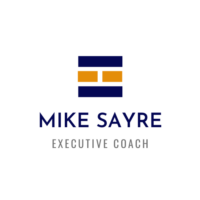Moving from alternative evaluation to implementation strategy…
In the prior article, you came up with ideas/alternatives for changing your business to help it stabilize, thrive and grow as it emerges from this crisis. The ideas were based on customer feedback and a high-level analysis of business impact and resource availability to implement.
Now is the time to take a little deeper dive into your business before you run off to implement your new ideas. It’s called a SWOT analysis (Strengths, Weaknesses, Opportunities and Threats) and it can help line up your strengths with your opportunities, as well as any weaknesses or potential threats for you moving forward.
The ideas/alternatives you came up with when reading the previous article can be where you start on the Opportunities piece of this analysis. Since we are starting with Opportunities, let’s just change the order of SWOT to OSWT!
Next list your Strengths, Weaknesses and Threats as they pertain to your Opportunities. This view should give you some idea of the overall viability of your alternatives with a more holistic perspective for developing your implementation strategy. Then you can start making some well thought out decisions.
In our electronics manufacturing services business, our integration business was challenged. Integration was a low margin and working capital intensive business that we had let grow somewhat out of control. Our sales were growing, but our profitability was not, and we were almost killing ourselves to keep up with that growth…unsustainable.
Figuring out what to do took a couple of months. We had so many everyday challenges, getting in an offsite and just knocking it out was not viable, and would have been too shallow of an analysis in my opinion.
Input and ideas came in through our staff meetings, our board meetings, several one-on-one discussions with various team and board members, competitive research, and even through interviews with potential sales leaders from the electronics industry. The same major OSWTs kept coming up in those conversations. They were all so interrelated, they could not be evaluated or addressed separately. They needed to be addressed holistically, and some of our stakeholders would definitely benefit more than others, depending on how we decided to proceed. So, it was complex. We needed to simplify it somehow, if that was possible.
I took the lead on distilling it all down to how we could move forward and presented it to the leadership team and board for their suggestions and advice, as well as their approval on the final plan moving forward. I’ve just always found it easier to get input and approval on something like this if you give everyone something fairly complete to start with.
My analysis started with this simplified OSWT model:

Having thought through the OSWTs, developing the implementation strategy then came down to how we could stay true to our mission and vision, maximize the benefits across our stakeholder groups (shareholders, customers, employees, suppliers and communities), and decide how much risk were we willing to take to get those benefits.
To do what we believed was the best course of action, we agreed to pay less attention to the short term distractions of being a small public company. We took a longer term approach that would benefit everyone much more when we were successful. We decided to move into the embedded computer design and manufacturing space and become less dependent on our commoditized integration work.
- We offered our no to low margin integration customers a price increase, which a couple of large customers decided not to endure. We were not surprised. Unfortunately, and I don’t take these kinds of actions lightly, this required cutting people. However, that freed up resources at all levels of our organization to focus more on moving into the embedded computer space.
- We did our best to improve our service for our more profitable large integration accounts to keep them with us and fund our move into the embedded computer space.
- With a commitment to new business that had to be profitable, we priced ourselves out of new low margin integration business opportunities and we lost some salespeople who did not agree with the move. It negatively affected their revenue-based compensation. So that also increased our resources to move into the embedded computer space.
- With the increased resources, we focused on building and maintaining high quality and service standards, hired sales leadership out of the embedded computer industry, and began our journey that resulted in great success building computers that run naval shipboard systems, unmanned aerial vehicles (military drones like the one pictured above), sophisticated medical equipment systems, and more.
These decisions were not easy or popular with everyone. However, they were well analyzed and thought out, and agreed on by the team and board as the best path to move us toward a much better business model than we ever had before.
Models like SWOT, or OSWT, are meant to help you put together a more complete and meaningful framework of information for evaluation or presentation of what you are evaluating or presenting. They enable more structured and complete analysis and have many uses, this being just one. In the end, the results of your analysis should be supported by you and your team’s intuition and confidence in your thought processes. If they aren’t, pull the team and some outside independent thinkers together (think advisory board or highly experienced consultants) to help you think it through again. Maybe your initial intuition was right, or maybe it just needed some more complete information.
Mike Sayre has successfully piloted businesses through difficult times of crisis for over 20 years – as a CEO, President & COO, CFO, and/or Board Director. He is currently an independent executive leadership consultant working through Civilis Consulting and the Innovative Leadership Institute, trusted partners inspiring and enabling perpetual innovation, evolution, and growth in leaders and their businesses.

